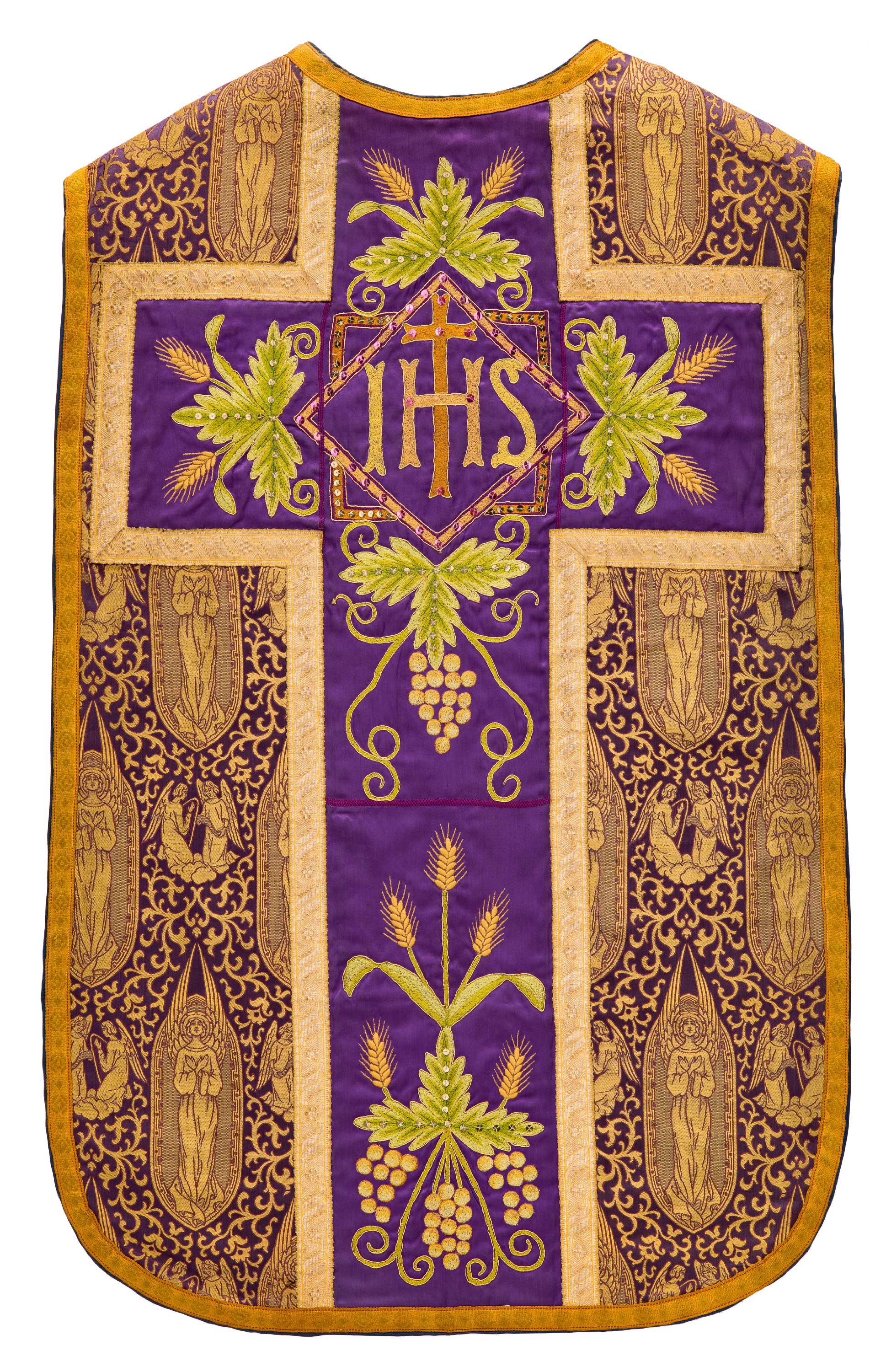
Chasuble.
Lithuania, 3rd – 4th decade of the 20th c.
Church of Saints Peter and Paul the Apostles in Vilnius.
20th c. Tradition or change
In the first half of the 20th century, the appearance of liturgical vestments developed along the lines formed in the 19th century, but a hundred years in the tsarist Russian Empire, two world wars and the Soviet occupation caused Lithuania’s isolation from the life of the Universal Church. The making and embroidery of liturgical vestments went into decline. Vestments from the Lentvaris church whose patrons were the Tyszkiewiczs, distinguished by high quality and craftsmanship, were an exception.
Chasubles
The chasuble is the central vestment for the Holy Mass worn by a priest over all the other parts of liturgical clothing. Originating from a Roman conical cloak protecting from cold, it has retained its form throughout the Middle Ages. Its sides gradually became shorter allowing more freedom of movement, until it became similar to a magnificent shield. The 19th–20th century liturgical movements returned the ancient form of a cloak to the chasuble.
Embroidery with metal and silk threads
The chasuble is characterized by an Art Nouveau-style pattern. The cross is arranged in the centre; this composition reflects the decoration style of liturgical vestments created in the 19th century: the back orphrey acquired the form of a cross with a medallion placed at the intersection.
Floral ornaments
In the centre of the cross are the letters IHS – the monogram of the name of Jesus. Wheat and grapes symbolize bread and wine, changed into the flesh and blood of Christ during the Mass.
